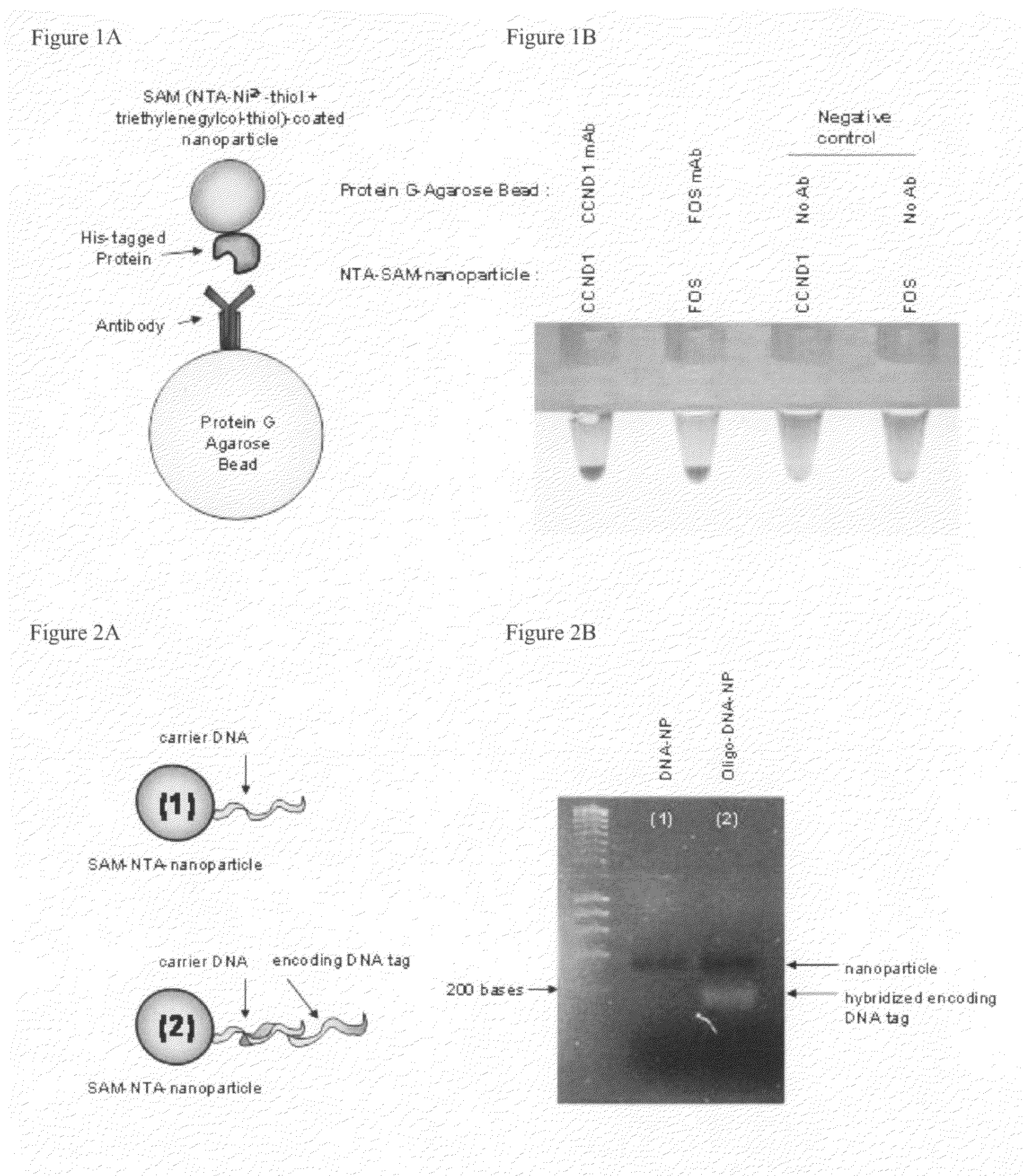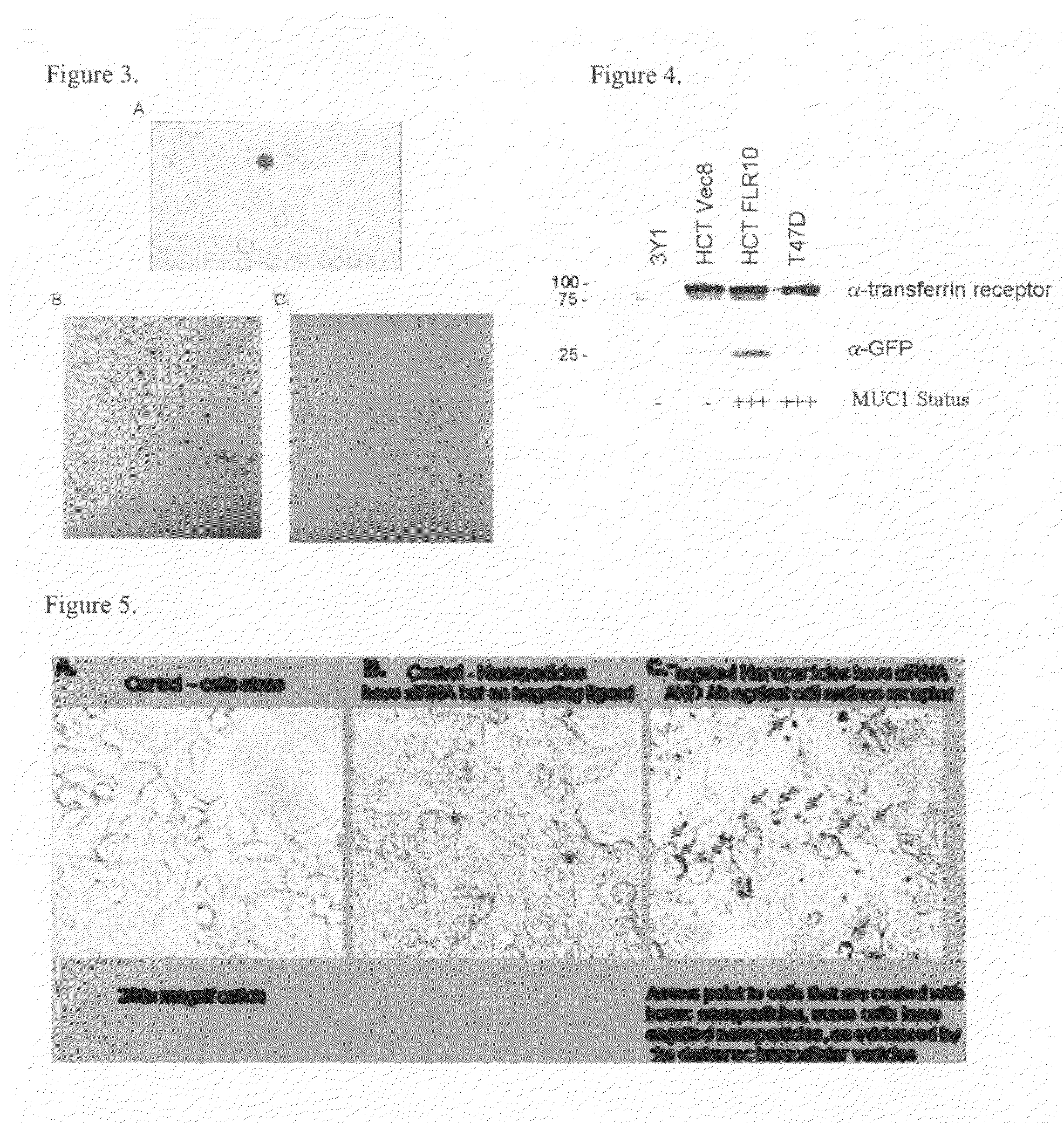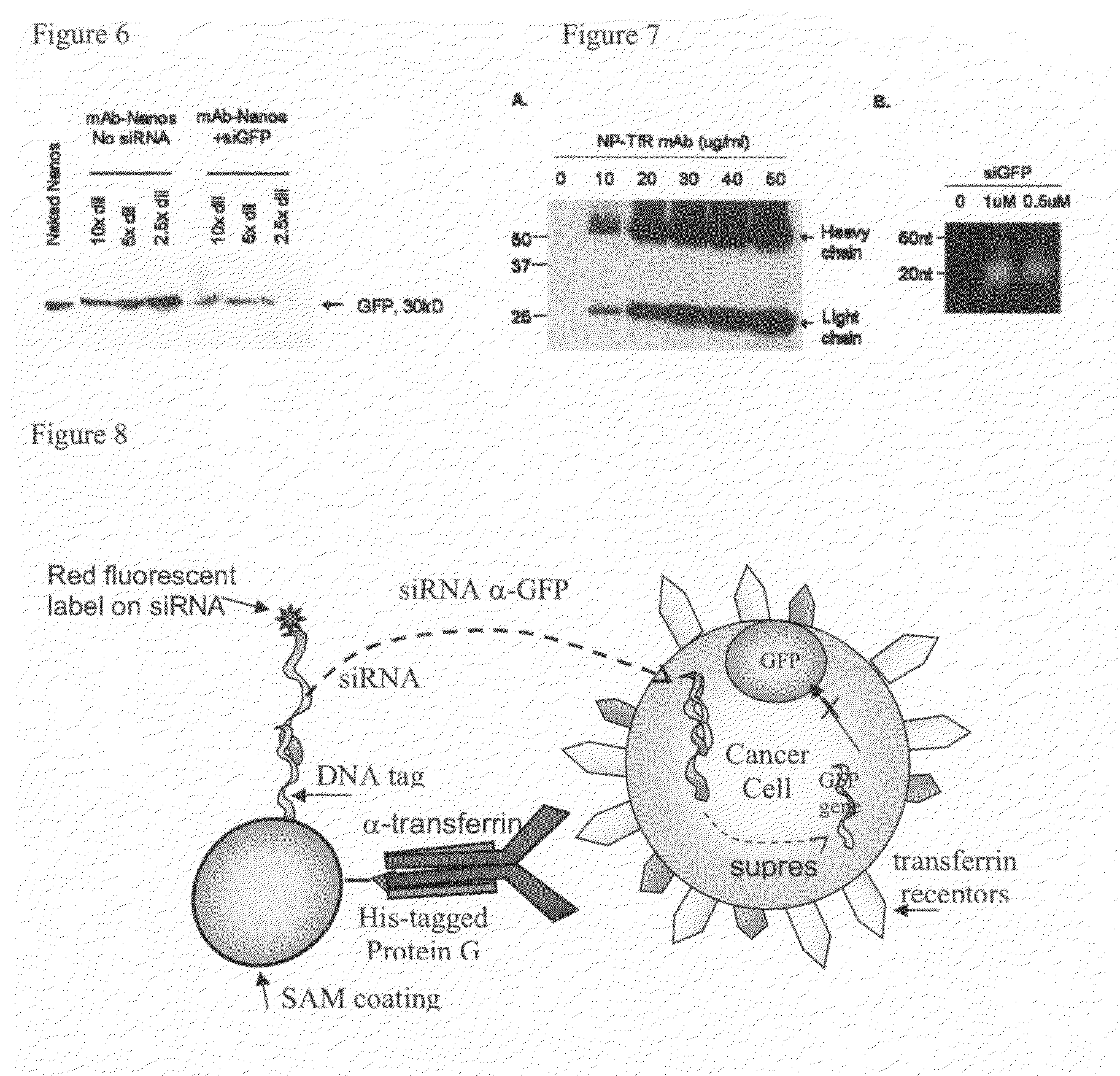Method for treating cancer using interference RNA
a technology of interference and radiation, applied in the field of nanoparticles, can solve the problems of less than 2% of the therapeutic rna reaching the targeted site, the method they use would not work in humans, and the demand for better treatmen
- Summary
- Abstract
- Description
- Claims
- Application Information
AI Technical Summary
Benefits of technology
Problems solved by technology
Method used
Image
Examples
example 1
[0082]Preparation of Self-Assembled Monolayers (SAMs) on gold nanoparticles
[0083]Concentrated solutions of gold nanoparticles were prepared by spinning down 40 ml of AuroDye Forte (GE Healthcare, RPN490) in 50 ml ultracentrifuge tubes at 13000 rpm for 30min at 4° C. Next, 37.3 ml of supernatant was carefully removed using electric pipette aid and ˜2.7 ml was left behind. Supernatant was saved. The pellet was resuspended in the remaining ˜2.7 ml using a vortex mixer. The resuspended gold solution was stored at 4° C.
[0084]To assemble the SAMs, 400 ul of concentrated gold nanoparticles were placed into each microcentrifuge tube. To this, 400 ul of a solution of a mixture of thiols, optionally having a total thiol concentration from 250 uM to 1 mM, called the “deposition solution”, was added, mixed well and allowed to incubate on the bench top for 2˜3 hrs. The deposition solution consisted of a mixture of thiols some of which were terminated with different functional headgroups, includi...
example 2
[0102]Experiment demonstrating the specificity of nanoparticles coated with affinity functionalized SAMs.
[0103]SAM-coated nanoparticles, with proteins immobilized via interaction between a histidine tag on the protein and NTA-Ni incorporated into the SAM, specifically bind their target and show virtually no non-specific binding. Cognate antibodies were bound to micro-scale, protein G derivatized agarose beads. NTA-Ni-SAM-nanoparticles with immobilized CCND1 protein or Fos protein were mixed with the antibody-bearing beads. Beads and nanoparticles were combined in PBS and incubated at 4 C on a rotary shaker. Samples were removed, agarose beads were allowed to settle due to gravity, and were photographed, (see FIG. 1). Micron-scale beads are pulled out of solution by gravity, but free 15-50 mn colloidal particles in a homogeneous suspension do not settle due to gravity. In the control experiments wherein no antibody was attached to the beads, the beads settled but remained clear in co...
example 3
[0104]Preparation and performance of SAMs incorporating both NTA-Ni-thiols, tri ethylene glycol-terminated thiols and DNA-thiols. SAMs were formed on nanoparticles as described above. A 165 base DNA tag was hybridized to carrier DNA-thiols incorporated into the SAMs. The nanoparticles were washed three times with PBS. Nanoparticles before (Lane 1) and after (Lane 2) hybridization with the DNA tag were resolved on a 1% agarose gel for detection of the DNA tag. The DNA band at the appropriate size is clearly visible in the lane that had the hybridized DNA and absent in the lane where DNA was not hybridized to the oligo tag in the SAM, (See FIG. 2).
PUM
| Property | Measurement | Unit |
|---|---|---|
| temperature | aaaaa | aaaaa |
| temperature | aaaaa | aaaaa |
| pH | aaaaa | aaaaa |
Abstract
Description
Claims
Application Information
 Login to View More
Login to View More - R&D
- Intellectual Property
- Life Sciences
- Materials
- Tech Scout
- Unparalleled Data Quality
- Higher Quality Content
- 60% Fewer Hallucinations
Browse by: Latest US Patents, China's latest patents, Technical Efficacy Thesaurus, Application Domain, Technology Topic, Popular Technical Reports.
© 2025 PatSnap. All rights reserved.Legal|Privacy policy|Modern Slavery Act Transparency Statement|Sitemap|About US| Contact US: help@patsnap.com



